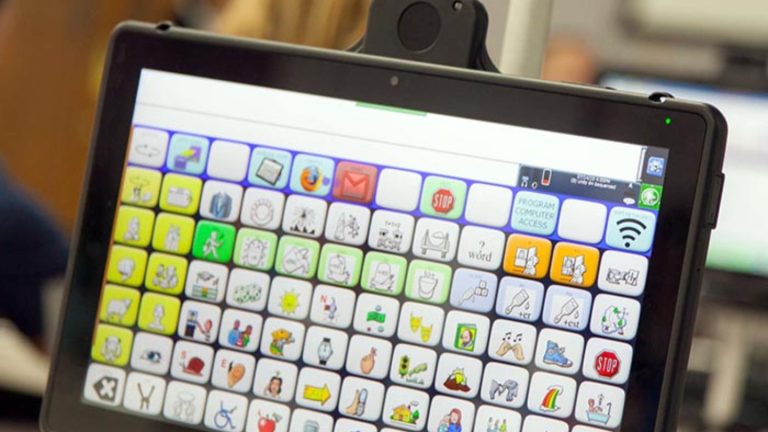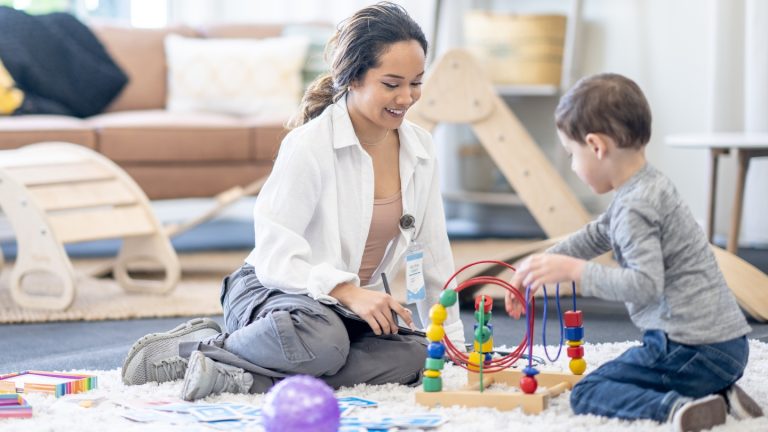
Augmentative and Alternative Communication (AAC) encompasses all forms of communication, other than oral speech, that are used to express thoughts, needs, wants, and ideas of an individual. These forms of communication can include gestures, facial expressions, symbols, pictures, and written words, as well as sophisticated electronic devices. It is crucial for individuals who live with significant speech or language problems, aiding them in their daily communication, and providing a voice to those who struggle with traditional speech – fostering greater independence and social interaction within their community.
In this post, we offer an in-depth exploration of AAC for children and adults, highlighting the similarities, differences, and unique challenges faced by each group, as well as the various types of AAC tools and strategies that can be employed to mitigate some of these challenges. We will also discuss the role of caregivers and professionals in supporting AAC users, and the impact of AAC on the quality of life for both children and adults.
AAC for Children
The need for AAC in children arises when they have complex communication needs. These may be due to conditions like autism, cerebral palsy, or developmental delays. Early intervention with AAC can significantly enhance a child’s ability to communicate effectively, reducing frustration and promoting better social interactions. AAC for children is not just about providing a communication tool; it’s about opening doors to social interaction, education, and independence that are essential to early growth and development. These tools help children to build critical language skills, which are foundational for cognitive and social development.
The benefits of AAC for children can be far-reaching, helping children to express their thoughts, participate more broadly in school, and interact positively with peers and family. It gives them a voice and a way to engage with the world around them. Using AAC can also boost a child’s confidence and self-esteem, as they are able to communicate more effectively and assertively.
Common AAC methods used for children can include sign language and high-tech devices such as speech-generating devices. Low-tech options, like communication boards or books, are also widely used and can be particularly beneficial in early stages or for children with motor difficulties. The choice of method depends on the child’s abilities, needs, and environment, and often involves a trial-and-error approach to find the most effective tools and strategies. Collaboration with speech-language pathologists, educators, and caregivers is crucial to tailor the AAC system to the child’s unique needs and preferences, and ensure successful implementation.

AAC for Adults
AAC for adults is equally crucial, especially for those who lose their ability to communicate due to conditions like stroke, brain injury, or degenerative diseases (like Amyotrophic Lateral Sclerosis (ALS) or Parkinson’s Disease). AAC can restore their ability to express themselves, maintain social relationships, and lead a higher quality life.
For adults, AAC not only provides a means of communication but also a way to preserve their personal identity and autonomy. It can help them regain their independence, participate in society, and reduce frustration associated with communication difficulties. By enabling adults to convey their thoughts, needs, and emotions effectively, AAC contributes to better mental health and overall well-being.
Common AAC methods used for adults may include letter boards, communication books, and high-tech devices like speech-generating devices or apps on smartphones and tablets. Many adults benefit from customised AAC solutions that cater to their specific preferences and lifestyles, ensuring ease of use and integration into daily activities. Training and ongoing support from speech-language pathologists and caregivers are essential to help adults adapt to and fully utilise their AAC systems.
Comparing AAC in Children vs Adults
While the fundamental aim of AAC – to facilitate communication – remains the same for both children and adults, the needs, implementation, and challenges can be different. Each age group requires a unique approach to effectively meet their communication needs and support their daily interactions.
Implementing AAC can be more challenging in children due to their evolving language skills and cognitive abilities. Their preferences and needs can change rapidly as they grow, necessitating frequent reassessments and adjustments to their AAC systems. Adults may face challenges related to acceptance of AAC, especially if their communication difficulties are acquired later in life. Adjusting to AAC can be emotionally challenging for adults who have experienced a sudden loss of speech, and they may require more support and encouragement to adapt.
AAC communication strategies must be tailored to the individual’s age, abilities, and needs. For children, incorporating AAC in play and education can be effective, as it makes learning fun and engaging while fostering essential communication skills. For adults, integrating AAC in their daily tasks and social activities can enhance their ability to manage everyday responsibilities and maintain social connections. This tailored approach ensures that the AAC system remains relevant and beneficial, helping users of all ages to communicate more effectively and confidently.
AAC plays a vital role in enabling communication for individuals who face challenges with speech and language. Whether it’s AAC for children or adults, the ultimate goal is to enhance their quality of life and foster their independence. By providing the means to express themselves, AAC empowers individuals to participate more fully in their communities and build meaningful relationships.
While differences in implementation and challenges exist, the benefits of AAC are universal. Both children and adults can experience improved self-esteem, better social interactions, and a greater sense of autonomy through effective communication. Continued research and development of AAC methods are essential to cater to the diverse needs of individuals with communication difficulties. After all, everyone deserves a voice, and AAC is a tool that can make this a reality.
If you need further support, we are dedicated to providing comprehensive support and tailored AAC solutions to meet the unique needs of each individual. Contact us today to learn more about how we can help you or your loved one enhance communication and achieve greater independence through AAC.








